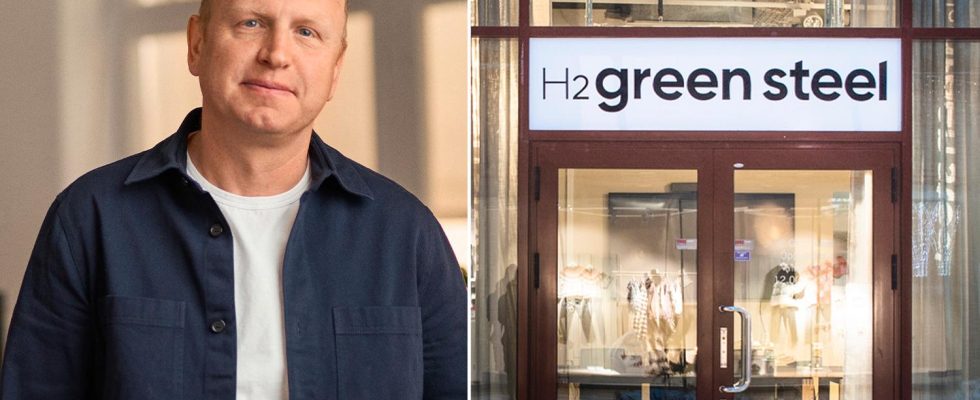Celebrities, heavyweights and our pension funds invest 18 billion in H2 Green Steel.
Scania’s former CEO runs the project.
– It’s more fun than I thought, but also more difficult than I thought. But now we have it in place, says CEO Henrik Henriksson.
It is a large group of investors who are now putting SEK 18 billion into the H2 Green Steel project, which wants to build a green steel mill in Boden.
Here is Cristina Stenbeck, one of Ingvar Kamprad’s foundations and the Wallenberg family’s owning company FAM, as well as our pension money in the form of the Second AP Fund and AMF.
As well as the founders, venture capitalist Harald Mix and entrepreneur Carl-Erik Lagercrantz, via their companies.
– Now we have the money we need to drive full speed ahead, says CEO Henrik Henriksson.
H2 Green Steel has raised a total of SEK 21 billion and has received promises of bank loans of SEK 38 billion. A total of almost 60 billion. For comparison, that’s roughly what Sweden’s justice system cost last year.
Why do you go ahead with the project when you are not allowed to buy ore from LKAB?
– We have secured two large agreements on ore with Vale from Brazil and Rio Tinto from Canada.
– But we continue to work to get Swedish ore as well. An investigation is underway together with the Swedish Transport Agency, LKAB and us.
You have said that you placed the facility in Boden because it was close to ore and cheap electricity?
– Yes, and close to good infrastructure also with ports and railways. Therefore, we expect that we will solve this with Swedish ore.
State-owned LKAB exports some of its ore, but most of it goes to SSAB, where LKAB is the main owner.
If you have to import the ore, it will be more expensive, right?
– It is the world market price for ore and most agreements include delivery to the customer. However, it has a certain impact on our carbon dioxide emissions.
Will you have enough electricity?
– Yes. We have signed agreements with both Statkraft and Fortum. We have about 40 percent of our needs in long contracts and we intend to buy the rest on the open market.
Henrik Henriksson points out that there is a large surplus of electricity in northern Sweden. H2 Green Steel will use around 10 terawatt hours, TWh, per year when the facility is expected to be up and running at the end of 2025. Last year, Sweden exported 33 TWh and was Europe’s largest exporting country.
You have said that your customers want electricity from the sun, wind and water, how do you feel about nuclear power?
– The customer contracts we have written are primarily with Scandinavian and German customers and there is a requirement from the customers’ side that it must be renewable energy.
H2 Green Steel’s future customers have signed contracts worth SEK 100 billion, according to Henrik Henriksson.
Given the mess with the ore, why don’t you place the plant somewhere other than Boden?
– We think Boden is exactly the right place. There you have access to green electricity and access to infrastructure. It is, together with northern Norway, the place in Europe where we have the best conditions for building green steel production. If you look at the electricity prices in Germany, they are about four times as high.
However, H2 Green Steel also plans for a plant in Portugal.
You are going to build the world’s largest hydrogen plant in Boden, is it the hydrogen, the ore or both that you intend to make money from?
– We will use all the hydrogen we produce for our own production of green iron.
No one has built such a large hydrogen plant before, how do you know you will succeed?
– It’s like putting together Lego pieces of smaller facilities.
How do the higher interest rates affect the project?
– They have a certain influence. At the same time as inflation drives the revenue side.
Concrete and steel have become more expensive, how do the higher construction costs affect the project?
– As a requirement from our banks, we have already secured 75 percent of the project cost via contract.
Henrik Henriksson was previously CEO of Scania with 50,000 employees, but now he runs this project with 250 people. When the facility in Boden is up and running, 1,500–1,600 people are expected to work there during the first phase.
How does it feel to have gone from being CEO to running this project?
– It’s more fun than I thought, but also more difficult than I thought. But now we have it in place.
